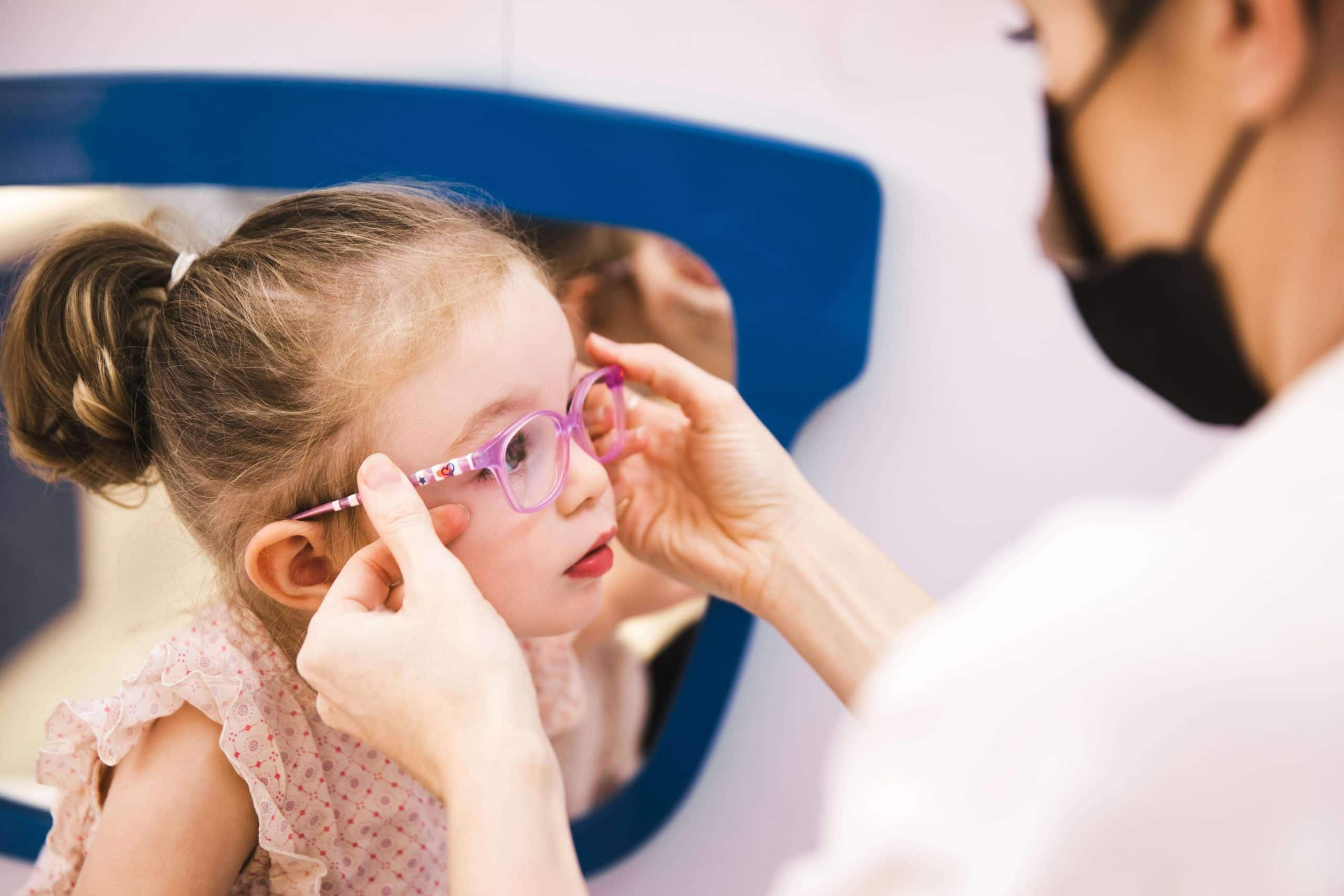As parents, we strive to give our children the best start in life—nurturing their growth, education, and overall well-being. But one crucial aspect that often goes unnoticed is eye health. Clear vision plays a vital role in learning, movement, and social development, yet many children live with undiagnosed vision issues simply because they cannot express or recognize them.
With research showing that myopia (short-sightedness) is expected to rise from 27% of the world’s population to 52% by 2050, regular children’s eye exams in Dubai are more important than ever. Detecting and treating vision problems early can make a lifelong difference.
Why Are Children’s Eye Exams So Important?
Children rely heavily on their eyesight to explore the world and succeed academically. Unlike adults, they might not realise they have a vision problem—assuming that what they see is “normal.” Conditions such as near-sightedness, far-sightedness, or lazy eye often go unnoticed until they begin to impact learning, confidence, or participation in everyday activities.
Regular eye exams ensure that vision problems are caught early and treated effectively, giving children the best chance to thrive.
Common Eye Conditions in Children
Several eye conditions can affect children, and early intervention can significantly improve outcomes. Some of the most common include:
- Refractive Errors – Myopia (short-sightedness), hypermetropia (long-sightedness), and astigmatism.
- Strabismus (Squint) – Misalignment of the eyes, often affecting depth perception.
- Amblyopia (Lazy Eye) – Where one eye becomes weaker because the brain favours the other.
- Eye Allergies & Infections – Causing redness, irritation, or discharge, especially in young children.
When Should Children Have Eye Exams?
Eye health monitoring should begin early. Experts recommend:
- First eye exam – Around 6 months of age
- Follow-up – At 3 years old
- Before starting school – To ensure vision is ready for academic demands
- Afterwards – Every 1–2 years, or more frequently if there’s a family history of eye problems or an existing condition
In today’s digital age, where children spend hours on screens, regular check-ups are vital to prevent strain, early-onset myopia, and other issues.
Book an eye exam if your child:
- Tilts their head or squints when looking at objects
- Sits too close to the TV or holds books too near
- Struggles with reading or maintaining attention
- Complains of headaches or eye fatigue
- Appears clumsy or has poor coordination
- Frequently rubs or blinks their eyes
What Happens During a Children’s Eye Exam?
A paediatric eye exam is designed to be child-friendly and tailored to your child’s age. It may include:
- Vision testing – Using age-appropriate methods
- Eye alignment & movement checks – To detect squint or coordination issues
- Detailed eye examination – Sometimes with pupil dilation or advanced imaging
- Specialist care – Children are often seen by orthoptists, optometrists, and paediatric ophthalmologists for a complete review
Treatment Options for Children’s Eye Conditions
Non-Surgical Treatments
- Eyeglasses or Contact Lenses – The most common solution for refractive errors
- Myopia Control – Includes specialist lenses, Ortho-K (overnight reshaping contact lenses), low-dose atropine drops, and soft contact lenses
- Patching Therapy – Covering the stronger eye to train the weaker one (used for amblyopia)
- Atropine Occlusion Drops – Blurring the “good” eye to encourage use of the weaker eye
Surgical Treatments
For conditions like strabismus (squint), surgery may be recommended if non-surgical methods aren’t effective. Surgery helps correct eye alignment, improving both vision and appearance.
Children’s vision is the foundation of their learning, behaviour, and confidence. In a dynamic city like Dubai—where education and screen time place high visual demands—regular paediatric eye exams are one of the most effective ways to safeguard your child’s future.
If you’ve noticed any signs of vision problems, or if your child hasn’t had an eye exam recently, now is the time to book an appointment. Early detection ensures healthy development and gives your child the clear vision they deserve.
Frequently Asked Questions
1. Does screen time affect my child’s vision?
Yes. Prolonged screen use is linked to eye strain, headaches, and early-onset myopia. Encourage outdoor play and use the 20-20-20 rule: every 20 minutes, take a 20-second break to look at something 20 feet away.
2. My child is afraid of doctors—what can I do?
Children’s eye exams are designed to be gentle and playful. Specialists use child-friendly techniques to make the process stress-free. Parents are encouraged to stay with their child throughout the exam.
3. How long does an eye exam take?
A typical children’s eye exam lasts 30–60 minutes, depending on age and the type of tests required.
4. Can poor vision affect school performance?
Absolutely. Vision problems can be mistaken for behavioural or learning difficulties. Correcting eyesight can dramatically improve focus, confidence, and academic performance.
5. Do you provide care for children with special needs?
Yes. Eye care can be tailored for children with autism, Down syndrome, and other developmental conditions. Specialists adapt communication and testing methods to make the experience comfortable.
6. How often should children with glasses be seen?
Children with existing conditions or glasses should have eye exams every 6–12 months to monitor changes and adjust treatment as needed.
At Eyemastr, we believe every child deserves the chance to see clearly. Regular eye exams are not just about vision—they’re about giving children the confidence to learn, explore, and grow without limitations.
Follow us : Instagaram , LinkedIn


